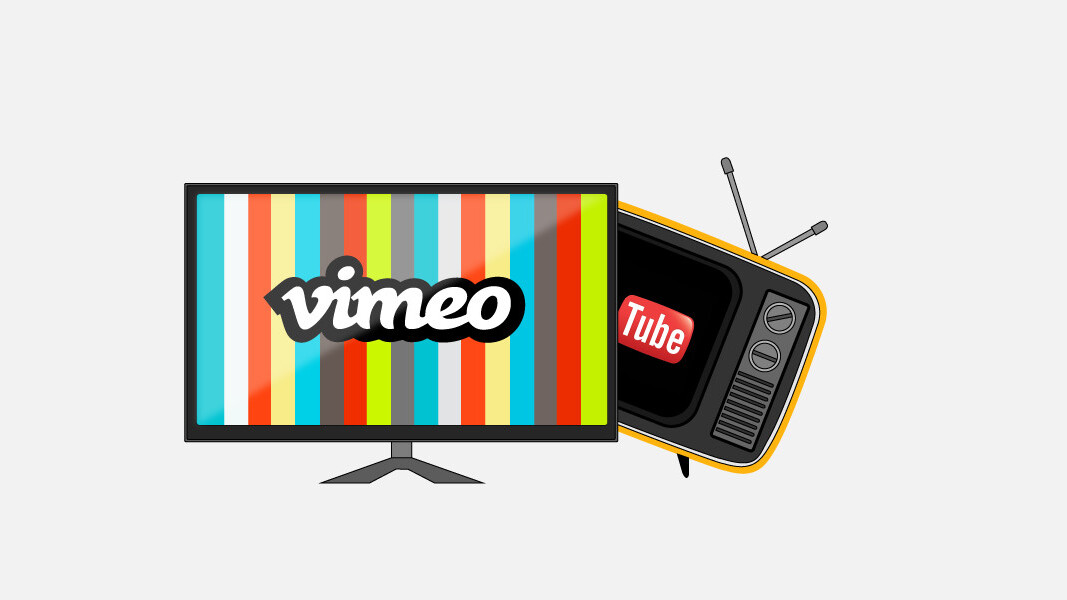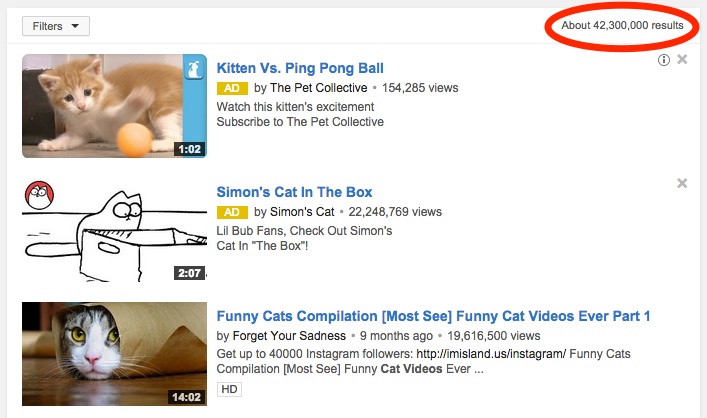
Brian Honigman is a marketing consultant, speaker and freelance writer. This post originally appeared on the SumAll blog.
Online video has very quickly become one of the most engaging and ubiquitous forms of content marketing. ComScore reports that in 2013 more than half of all Americans watched a combined 52 billion online videos.
According to that same report one platform netted more hours of viewing than all others combined. It’s fairly obvious to anyone who has spent even a little bit of time online that the name of that platform is YouTube.
It’s very hard to argue against YouTube’s dominance in terms of volume, audience, and reach. Yet, when it comes to creating online video for your business, there might be a better choice.
Vimeo was started around roughly the same time as YouTube, but in the decade since its launch it has gone in a much different direction than its much larger cousin. Although Vimeo might not be as large or as ubiquitous as YouTube, many of the differences between the two make Vimeo the better choice for marketers in certain respects.
Better quality content
As previously mentioned, YouTube is absolutely massive. At 1 billion unique visitors a month, it far eclipses Vimeo’s meager 70 million visitors per month. However, with so many visitors there is naturally a lot more content being uploaded. Most estimates claim that YouTubers upload 100 hours of video a minute.
Sure, YouTube’s users might be prolific with the amount of content added, but they do not have a reputation of being the most discerning bunch. In fact, as of now (there will certainly be many more tomorrow) there are roughly 42 million cat videos alone.
In the case of Vimeo, less happens to be more. Vimeo has instituted certain policies and constraints that purposefully limit the amount of video uploaded and ensures a certain standard of quality. For example, Vimeo allows for videos of unlimited length and quality, but curbs the storage space allotted to each user.
The only way for users to gain access to more storage is to pay for one of Vimeo’s many tiered accounts. This simple requirement goes a long way in tacitly enforcing a level of quality that YouTube simply does not even come close to.
Making the most of YouTube’s vast audience might be appealing if your business is concerned about reach above all else; but oftentimes having videos appear professional (by appearing in a more professional context) takes precedence over broad appeal.
Think about whether you’d rather your video catch fire on Facebook or on LinkedIn. The analogy may not be perfect, but it does a good enough job in illustrating the various strengths and weaknesses of the two platforms.
Less competition for visibility and advertising
Another fundamental difference between YouTube and Vimeo that we haven’t yet touched upon is how each site generates revenue. YouTube (being an extension of Google’s empire) naturally thrives off advertising.
Given this knowledge it only makes sense that YouTube encourages its mammoth user base to upload lots of videos. The more volume on the site, the more videos it can slap ads on to and the more time people spend on the platform.
Just one look at either YouTube’s search or individual video pages reveals the company’s true intention. Beyond being cluttered with extraneous ads, every spare inch of the page is dedicated to getting users to click to the next video.
For YouTube this is great, but for a business this represents a potential issue. In many cases, videos shown around your content will likely not belong to your business, which could present a problem by potentially associating your business with the wrong types of video.
Contrast this with Vimeo’s business model. Vimeo only makes money off of the users who pay for their accounts. This implicitly aligns Vimeo’s goals more with their customers (i.e. your business) than with their advertisers.
One fundamental benefit of this is that the site is completely free of advertising. Not only does this mean that your viewers won’t be forced to sit through annoying ads to get to your content, it also removes the much more sinister possibility that the ads your viewers will be forced to sit through will be for your competitors products or services.
Whether it’s in search results or in pre-roll ads, nothing can take the wind out of your content marketing like this kind of poaching for attention. It’s important to note that this issue can be prevented on YouTube with proper targeting, but with Vimeo this isn’t a concern in the least.
Paid account access
Another way that Vimeo’s business model benefits businesses is that it forces the team to focus a great deal of their attention on those members who actually pay for their accounts. Since paid membership is the only way Vimeo can stay afloat, it does everything in its power to make PRO account holders happy.
Especially for companies willing to make a sizable investment in their content marketing, Vimeo’s Plus or PRO accounts present an incredibly affordable option. This means that within the Vimeo ecosystem a business account and a PRO account will be nearly synonymous. On Vimeo, being “Plus” or “PRO” affords some substantial benefits.
There are of course the heavily advertised benefits such as faster video conversion, privacy options (especially good for sharing amongst limited groups or sending videos for review), advanced stats, and around the clock e-mail support.
These are all great features but perhaps the biggest feature of being PRO is simply being listed as such. As was already discussed, one of the key benefits of Vimeo over YouTube is that there is less competition for attention. Having your account listed as PRO takes this advantage another step by further separating and elevating your content.
Superior customization at times
Taking this advantage even further are the options Vimeo gives its premium subscribers to customize many elements of the already sparse Vimeo player. While YouTube does give you the option to customize certain elements of their video player, its flexibility comes nowhere close to even the most basic Vimeo options.
For a brand hoping to truly have their message shine through uninterrupted, Vimeo’s advanced customization features can really make an impact.
A Vimeo PRO account allows your business to add its logo to the video player and add a custom outro to all of its videos. Especially if a brand is hoping to simultaneously embed these videos into its website, these options can make a big difference in seamlessly integrating the video elements.
Features like these seem to highlight a key dissimilarity between YouTube and Vimeo. Namely, each platform has benefits, but there interests are aligned in very different directions.
YouTube does have a much larger audience (almost to a fault) where a major advantage is the potential for your content to go viral. Otherwise the price you pay for access to such an audience on YouTube is the paying through the nose for advertising to gain additional visibility.
Vimeo, on the other hand, offers businesses the ability to compete on a much smaller playing field, but for much more focused attention. In addition, it gives businesses the ability to highlight their content in a much less disruptive, but still effective manner.
Because Vimeo does not benefit by distracting its customers from the content on its site Vimeo is more than happy to recede into the background and let the content exist on its own. This fundamentally aligns Vimeo’s interests with their paying customers, whereas with YouTube it’s impossible to buy this kind of loyalty or cooperation. It can only be rented one pre-roll ad at a time.
Which video platform does your business prefer? How does your organization plan to use video to reach your audience? Share your thoughts in the comments below.
Read next: 3 things you need to know about making a marketing video convert
Get the TNW newsletter
Get the most important tech news in your inbox each week.








